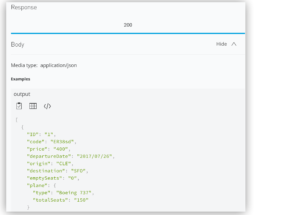MuleSoft Tutorial
MuleSoft is a software application that enables data and app connectivity between on-premises and cloud settings. Using the platform, developers can create advanced ecosystems for various types of enterprises. Its lightweight and scalable architecture makes it easy to integrate applications and data.
With its lightweight Java-based infrastructure, Mule allows device connectivity across on-premises and cloud settings. It supports a wide range of operating systems. Moreover, it is also a secure and reliable mulesoft training online platform. In addition to that, it provides world-class integration flexibility.

Aside from that, Mule ESB is a lightweight Java-based enterprise service bus that facilitates easy data and application exchange. This is beneficial to developers, software engineers, researchers, and web and backend developers.
MuleSoft Tutorial For Beginners
Basically, the ESB is the component of the MuleSoft platform that controls the interactions between components. Specifically, it enables developers to connect applications and data in order to build applications and networks. Moreover, it can be customized to global clouds and local clouds. Additionally, it has centralized data security management.
MuleSoft offers instructor-led and self-paced courses. There are also free online courses for those who are not familiar with the technology. The MuleSoft courses are targeted at people with an interest in technology, as well as experts and developers.
Depending on your skill level and learning speed, you can choose the training that is right for you. However, it is advisable to start with an introduction to the Anypoint Platform and the Mule runtime. Afterward, you can take on a course that focuses on APIs, the development of applications, and handling errors. Lastly, you can enroll in a certification program to earn an official MuleSoft certificate.
mulesoft tutorial for beginners are designed for anyone who is interested in learning the Anypoint platform and the Mule runtime. They are for beginners, as well as for experienced developers and architects. These courses include basic to intermediate knowledge in different areas of integration technologies, such as REST, HTTP, and data formats. Moreover, the courses are based on a practical approach, which means that it teaches students with good examples and hands-on experience. To enroll for a MuleSoft course, register with the company’s website. After that, you can schedule an exam. You will need to prepare a test, which will be taken digitally under certain circumstances.
Some of the most popular MuleSoft tutorials on YouTube are “MuleSoft Tutorial: Creating API Applications,” “MuleSoft Certification – Level 1 (Mule 4),” and “MuleSoft Architecture: Building an Active Communication Channel between Integrated Applications.” Those are the most popular. The best of these are said to have a minimum of 6,000 views.
Apart from these, you can also attend other online courses, such as MuleSoft Certified Developer – Level 1. Upon completion of this course, you will be certified as a Mulesoft developer. However, it is important to note that you must register with the company’s website to ensure that you are ready for the exam. If you are not sure whether or not you are ready for this exam, you can attend a self-paced or an instructor-led course.